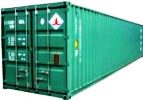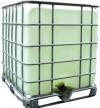| Mubychem Group, established in 1976, is the pioneer manufacturer of Sodium carbonate, Pharmaceutical, Fragrance & Flavor chemicals in India. Mubychem Group has several manufacturing facilities spread across Gujarat and Mumbai India and world wide contacts and toll manufacturers. We are exporting globally to countries like USA, Canada, Europe, UAE, South Africa, Tanzania, Kenya, Egypt, Nigeria, Uganda, Turkey, Mexico, Brazil, Chile, Argentina, Dubai etc. |
The participating units have one or more accreditations like FDA - GMP approval; ISO-9001 Certified; "REACH"registered; ISO-22000; Kosher Certified;Halal Certified; HACCP. We offer Pure & IP BP USP FCC Food Grade ACS AR Analytical Reagent Grades of Chemicals | |







Sodium carbonate Manufacturers, MSDS Sheet
Sodium Carbonate BP USP NF ACS Analytical Reagent IP FCC Food grade Manufacturers
Sodium Carbonate MSDS Sheet, Material Safety Data Sheet
Section 1: Chemical Product and Company Identification
Product Name: Sodium carbonate
CAS#: 497-19-8
Chemical Name: Sodium Carbonate, Anhydrous
Chemical Formula: Na2CO3
Section 2: Composition and Information on Ingredients
Composition Name: Sodium carbonate
CAS #: 497-19-8
% by Weight: 100
Section 3: Hazards Identification
Potential Acute Health Effects: Sodium carbonate is hazardous in case of skin contact (irritant), of eye contact (irritant), of ingestion, of inhalation (lung irritant).
Potential Chronic Health Effects:
Slightly hazardous in case of skin contact (sensitizer).
CARCINOGENIC EFFECTS: Not available.
MUTAGENIC EFFECTS: Not available.
TERATOGENIC EFFECTS: Not available.
DEVELOPMENTAL TOXICITY: Not available.
The substance may be toxic to upper respiratory tract, skin, eyes. Repeated or prolonged exposure to the substance can produce target organs damage.
Section 4: First Aid Measures
Eye Contact: Check for and remove any contact lenses. In case of contact, immediately flush eyes with plenty of water for at least 15 minutes. Cold water may be used. Get medical attention.
Skin Contact: In case of contact with Sodium carbonate, immediately flush skin with plenty of water. Cover the irritated skin with an emollient. Remove contaminated clothing and shoes. Cold water may be used. Wash clothing before reuse. Thoroughly clean shoes before reuse. Get medical attention.
Serious Skin Contact: Wash with a disinfectant soap and cover the contaminated skin with an anti-bacterial cream. Seek immediate medical attention.
Inhalation: If Sodium carbonate is inhaled, remove to fresh air. If not breathing, give artificial respiration. If breathing is difficult, give oxygen. Get medical attention.
Serious Inhalation: Not available.
Ingestion: Do NOT induce vomiting unless directed to do so by medical personnel. Never give anything by mouth to an unconscious person. Loosen tight clothing such as a collar, tie, belt or waistband. Get medical attention if symptoms appear.
Section 5: Fire and Explosion Data
Flammability of the Product: Sodium carbonate is non-flammable.
Auto-Ignition Temperature: Not applicable.
Flash Points: Not applicable.
Flammable Limits: Not applicable.
Products of Combustion: Emits Na2O fumes when heated to decomposition.
Fire Hazards in Presence of Various Substances: Not applicable.
Explosion Hazards in Presence of Various Substances:
Risks of explosion of the product in presence of mechanical impact: Not available.
Risks of explosion of the product in presence of static discharge: Not available.
Fire Fighting Media and Instructions: Not applicable.
Special Remarks on Fire Hazards: Sodium carbonate can ignite and burn fiercely in contact with fluoride. Sodium Carbonate in contact with fluorine decomposed at ordinary temperature with incandescence.
Special Remarks on Explosion Hazards: Reacts explosively with red-hot aluminum metal. Sodium carbonate + ammonia in arabic gum solution will explode.
Section 6: Accidental Release Measures
Small Spill: Use appropriate tools to put the spilled solid in a convenient waste disposal container. If necessary: Neutralize the residue with a dilute solution of acetic acid. Finish cleaning by spreading water on the contaminated surface and dispose of according to legal requirements.
Large Spill: Use a shovel to put the material into a convenient waste disposal container. Neutralize the residue with a dilute solution of acetic acid. Finish cleaning by spreading water on the contaminated surface and allow to evacuate through the sanitary system.
Section 7: Handling and Storage
Precautions: Do not ingest Sodium carbonate. Do not breathe dust. Wear suitable protective clothing. In case of insufficient ventilation, wear suitable respiratory equipment. If ingested, seek medical advice immediately and show the container or the label. Avoid contact with skin and eyes. Keep away from incompatibles such as acids.
Storage: Hygroscopic. Keep Sodium carbonate container tightly closed. Keep container in a cool, well-ventilated area. Do not store above 24C (75.2F).
Section 8: Exposure Controls/Personal Protection
Engineering Controls: Use process enclosures, local exhaust ventilation, or other engineering controls to keep airborne levels below recommended exposure limits. If user operations generate dust, fume or mist, use ventilation to keep exposure to airborne contaminants below the exposure limit.
Personal Protection: Splash goggles, Lab coat, Gloves, Dust respirator. Be sure to use an approved/certified respirator or equivalent.
Personal Protection in Case of a Large Spill: Splash goggles. Full suit. Dust respirator. Boots. Gloves. A self contained breathing apparatus should be used to avoid inhalation of the product. Suggested protective clothing might not be sufficient; consult a specialist BEFORE handling this product.
Exposure Limits: Not available.
Section 9: Physical and Chemical Properties
Physical state and appearance: Solid. (Solid powder.)
Odor: Sodium carbonate is odorless.
Taste: Alkaline.
Molecular Weight: 105.99 g/mole
Color: White.
pH (1% soln/water): 11.4 [Basic.]
Boiling Point: Not available.
Melting Point: 851C (1563.8F)
Critical Temperature: Not available.
Specific Gravity: Density: 2.509 (Water = 1)
Vapor Pressure: Not applicable.
Vapor Density: Not available.
Volatility: Not available.
Odor Threshold: Not available.
Water/Oil Dist. Coeff.: Not available.
Ionicity (in Water): Not available.
Dispersion Properties: See solubility in water.
Solubility: Soluble in hot water, glycerol.
Section 10: Stability and Reactivity Data
Stability: Sodium carbonate is stable. Incompatible with moisture.
Incompatibility with various substances: Reactive with acids. Materials to Avoid : Aluminum powder, acids, fluorine, molten lithium.
Polymerization: Will not occur.
Section 11: Toxicological Information
Routes of Entry: Inhalation. Ingestion.
Toxicity to Animals:
WARNING: THE LC50 VALUES HEREUNDER ARE ESTIMATED ON THE BASIS OF A 4-HOUR EXPOSURE.
Acute oral toxicity (LD50): 4090 mg/kg [Rat].
Acute toxicity of the dust (LC50): 1200 mg/m3 2 hours [Mouse].
Chronic Effects on Humans: Sodium carbonate may cause damage to the following organs: upper respiratory tract, skin, eyes.
Other Toxic Effects on Humans: Hazardous in case of skin contact (irritant), of ingestion, of inhalation (lung irritant).
Special Remarks on Toxicity to Animals: LDL (Lowest Published Lethal Dose) [Man] - Route: Oral; Dose: 714 mg/kg.
Special Remarks on Chronic Effects on Humans: May cause adverse reproductive effects based on animal test data.
Special Remarks on other Toxic Effects on Humans:
Acute Potential Health Effects:
Skin: Causes skin irritation with possible burns depending on the concentration, site (abraded or intact skin), and duration of exposure.
Eyes: Causes eye irritation and possible burns. Concentrated solutions may cause permanent corneal injury (permanent corneal opacity).
Ingestion: Sodium carbonate ingestion may cause irritation of the digestive tract resulting in nausea, vomiting, diarrhea, thirst, abdominal pain depending on concentration and amount ingested. May also affect the cardiovascular system.
Inhalation: Dust may cause respiratory tract and mucous membrane irritation with coughing and shortness of breath (dyspnea), pulmonary edema.
Chronic Potential Health Effects: Chronic inhalation may result in decreased pulmonary function, nasal congestion, nosebleeds, perforation of the nasal septum. Other effects of chronic exposure are skin (dermatitis and ulceration), and gastrointestinal complaints. However, the effects of chronic exposure seem to be reversible if exposure is decreased.
Section 12: Ecological Information
Ecotoxicity: Not available.
BOD5 and COD: Not available.
Products of Biodegradation: Possibly hazardous short term degradation products are not likely. However, long term degradation products may arise.
Toxicity of the Products of Biodegradation: The products of degradation are less toxic than the product itself.
Section 13: Disposal Considerations
Waste Disposal: Waste must be disposed of in accordance with state and local regulations.
Section 14: Transport Information
DOT Classification: Not a DOT controlled material (United States).
Identification: Not applicable.
Special Provisions for Transport: Not applicable.
Section 15: Other Regulatory Information
US Federal and State Regulations: TSCA 8(b) inventory: Sodium carbonate
EINECS: This product is on the European Inventory of Existing Commercial Chemical Substances.
WHMIS (Canada): CLASS D-2B: Material causing other toxic effects (TOXIC).
DSCL (EEC):
R36/37/38- Irritating to eyes, respiratory system and skin.
S22- Do not breathe dust.
S26- In case of contact with eyes, rinse immediately with plenty of water and seek medical advice.
HMIS (U.S.A.):
Health Hazard: 2
Fire Hazard: 0
Reactivity: 1
Personal Protection: E
National Fire Protection Association (U.S.A.):
Health: 2
Flammability: 0
Reactivity: 1
Specific hazard:
Protective Equipment:
Gloves.
Lab coat.
Dust respirator. Be sure to use an approved/certified respirator or equivalent. Wear appropriate respirator when ventilation is inadequate.
Splash goggles.
Section 16: Other Information
Disclaimer:
******************************
Our company provides this Sodium carbonate MSDS information sheet contained herein in good faith but makes no representation as to its comprehensiveness or accuracy. This Sodium carbonate MSDS document is intended only as a guide to the appropriate precautionary handling of the material by a properly trained person using this product. Individuals receiving the information must exercise their independent judgment in determining its appropriateness for a particular purpose.
******************************
Sodium Carbonate manufacturers at:
MUBYCHEM GROUP
CHINCHBUNDER, MUMBAI 400009, INDIA
TEL: (OFFICE) 91-22-23774610, 91-22- 23723564. 91-22-23728264
e-mail: anmol@pcmenergy.com

Copyright and Usual Disclaimer is Applicable.
Global or International Sodium Carbonate Suppliers, Exporters, Importers, Manufacturers
If I give you “My Word” Nobody can undo it.
If I sign an “Agreement” my Lawyer will undo it
Perfection is made up of small thing but it is not small.

